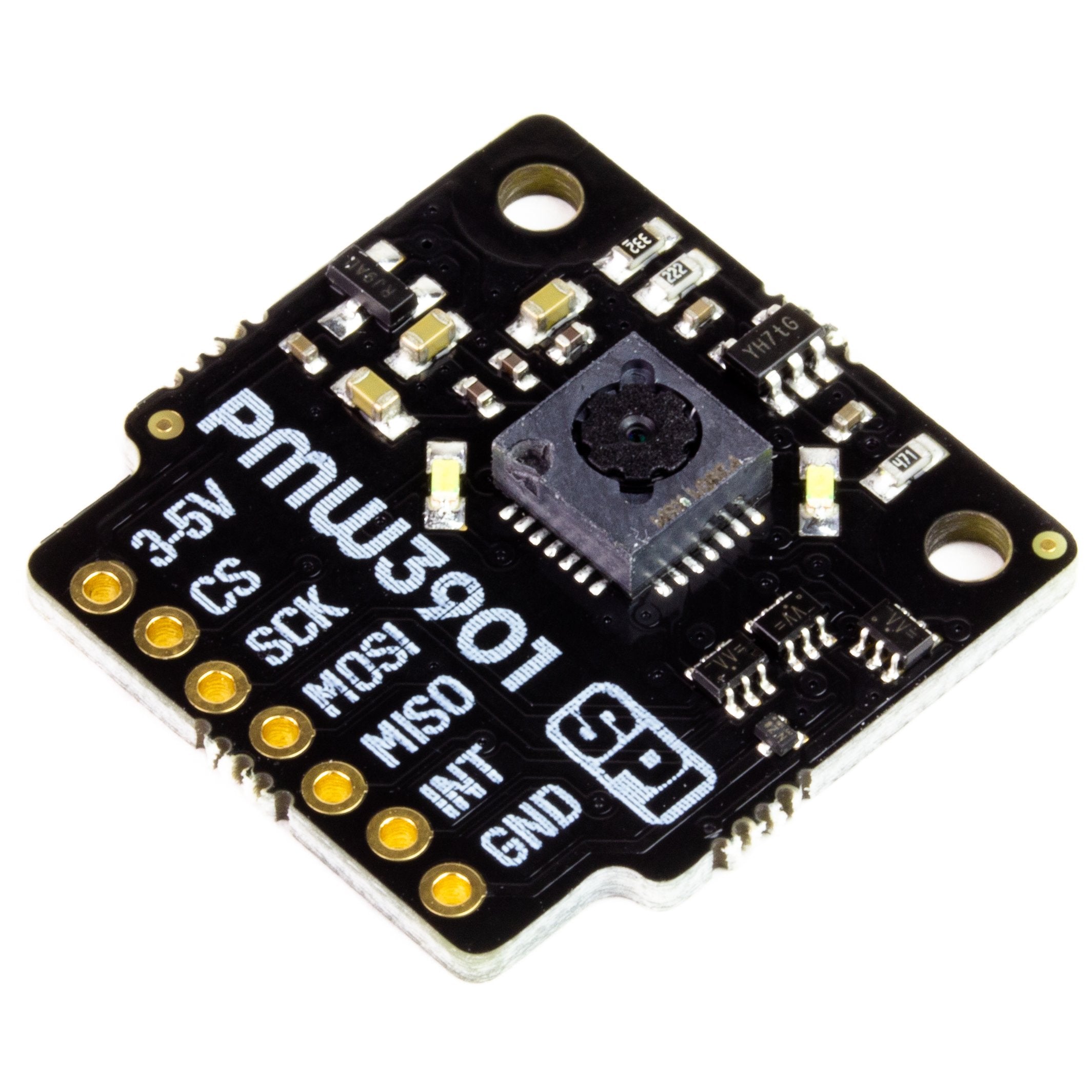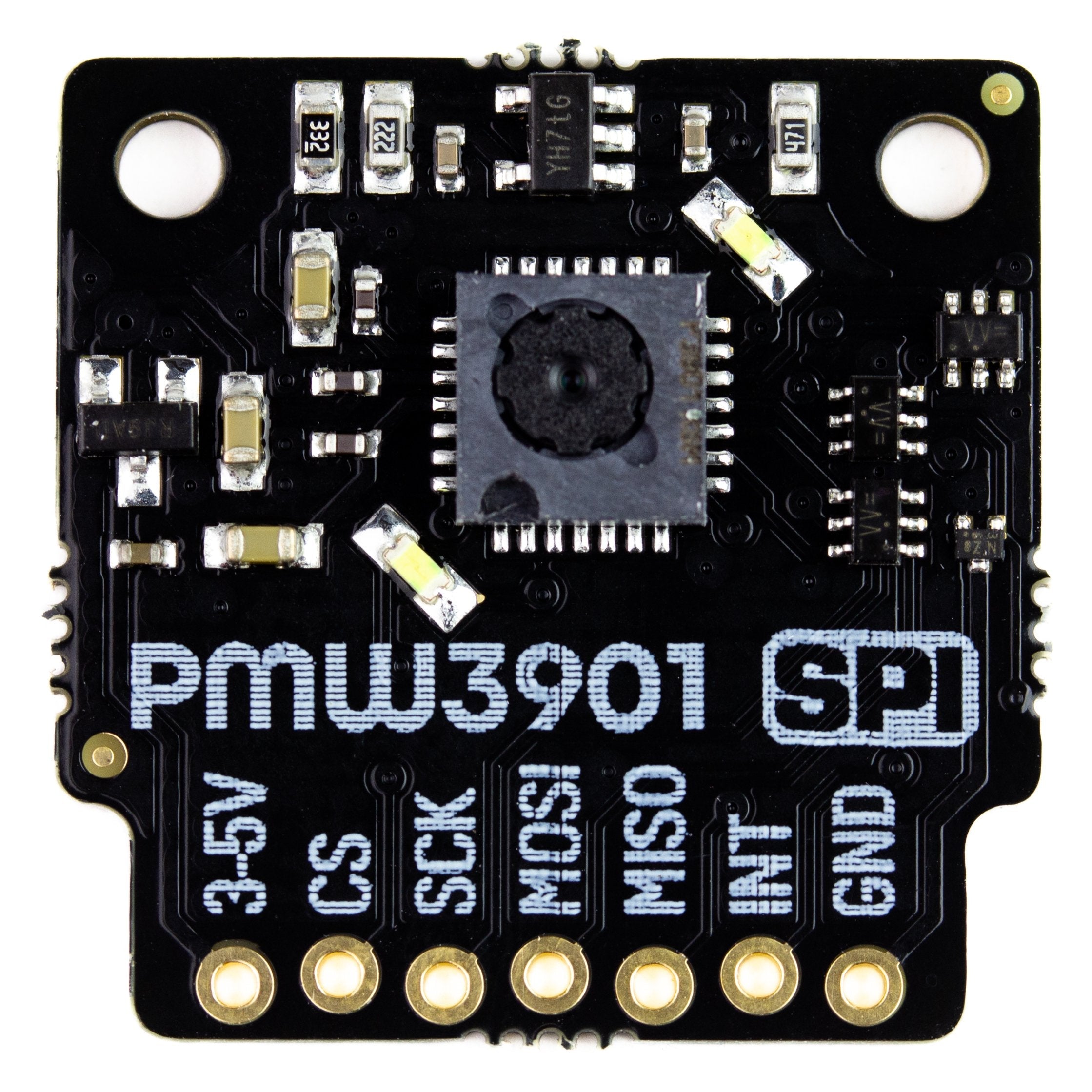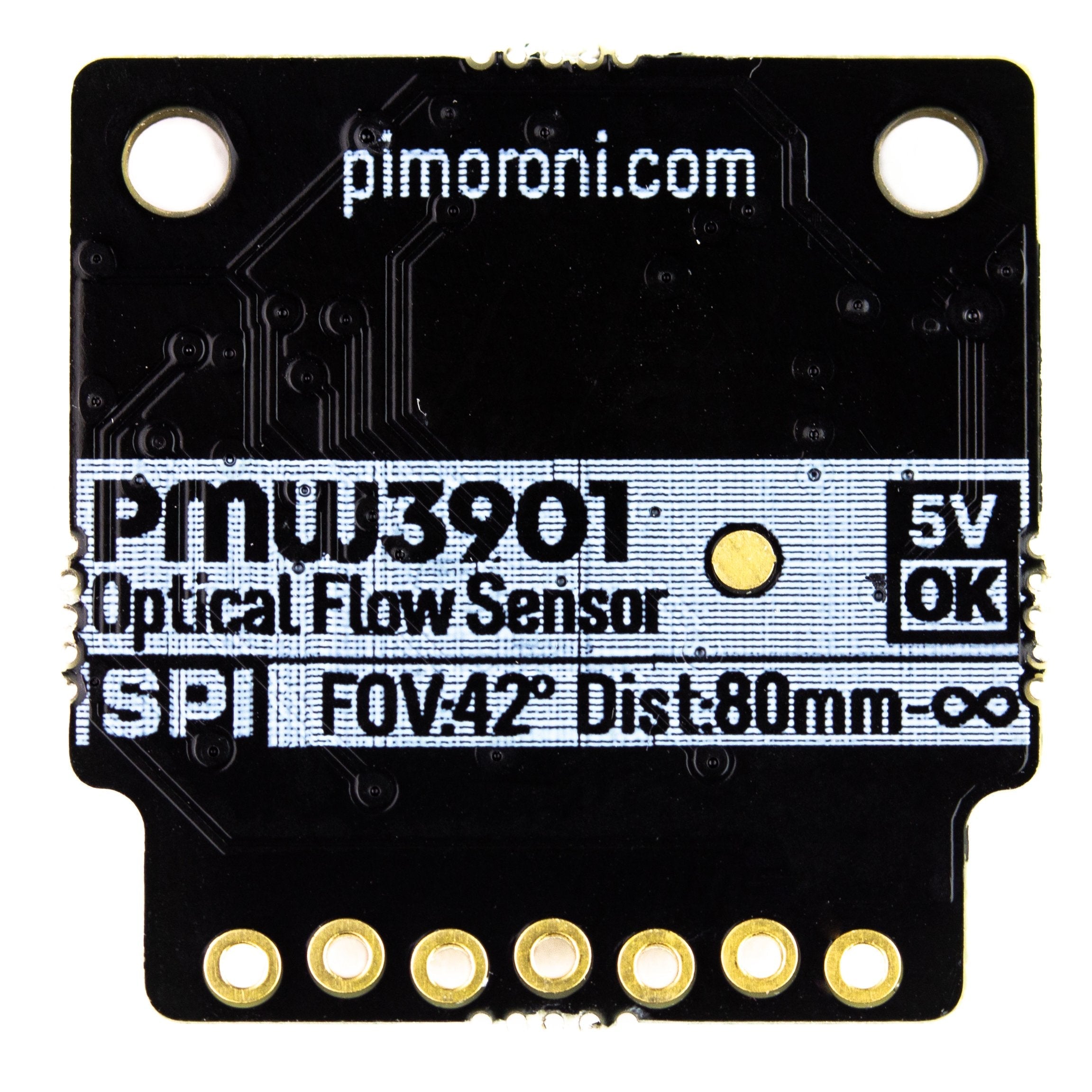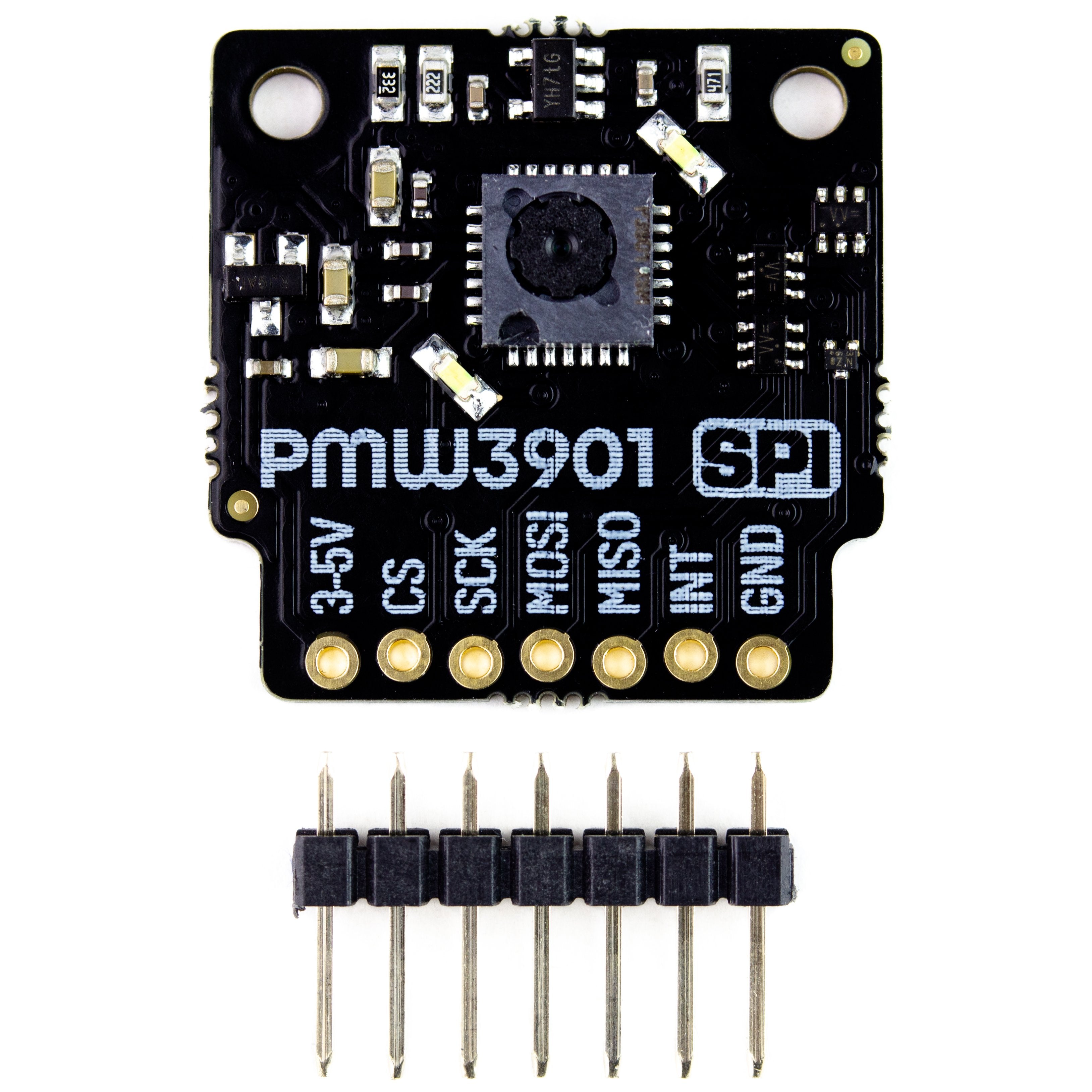Dieser schicke optische Flusssensor erkennt die Bewegung von Oberflächen vor ihm, von ~80mm bis unendlich! Er eignet sich hervorragend für den Bau von Drohnen und ist mit unserem neuen Breakout Garden HAT mit SPI kompatibel.
Der PMW3901 ist ein raffinierter kleiner Sensor, der eine Kamera mit geringer Auflösung und einige clevere Algorithmen verwendet, um die Bewegung von Oberflächen zu erkennen. Er eignet sich hervorragend zur Erkennung und Korrektur der Drift einer Drohne, indem er auf x/y-Bewegungen des Bodens darunter achtet.
Sie können diesen Breakout völlig lötfrei mit unserem neuen Breakout Garden HAT mit SPI !
Eigenschaften
- Optischer Durchflusssensor PMW3901
- Zwei weiße LEDs an Bord zur Beleuchtung
- Bildrate: 121 FPS (Bilder pro Sekunde)
- Geschwindigkeit: 7,4 rad/s (Bogenmaß pro Sekunde)
- Sichtfeld: 42°
- Bereich: ~80mm bis unendlich
- 6mA typische Stromaufnahme
- SPI-Schnittstelle
- 3,3V oder 5V kompatibel
- Schutz vor Verpolung
- Kompatibel mit allen Modellen von Raspberry Pi und Arduino
- Python-Bibliothek
Software
Wir haben eine Reihe von Python-Bibliothek zur Verwendung mit Ihrem Optical Flow Sensor Breakout. Es macht das Lesen der x/y-Bewegungswerte und ihrer Größe wirklich einfach.
Verbinden mit dem Raspberry Pi
Wenn Sie nicht unsere Breakout Garden HAT mit SPI Wenn Sie den optischen Durchflusssensor mit dem Raspberry Pi verbinden möchten, gehen Sie folgendermaßen vor.
Unsere Bibliothek ist so eingestellt, dass sie standardmäßig den vorderen SPI-Steckplatz verwendet: BCM 7 für CS, BCM 11 für SCK, BCM 10 für MOSI, BCM 9 für MISO und BCM 19 für den INT-Pin.
Hier sehen Sie, welche Pins Sie zwischen Ihrem Optical Flow Sensor Breakout und dem GPIO Ihres Pi anschließen müssen ( Beachten Sie, dass es sich um die BCM-Pin-Nummerierung handelt. ):
- 3-5V an einen beliebigen 5V- oder 3V-Pin
- CS an BCM 7
- SCK an BCM 11
- MOSI an BCM 10
- MISO an BCM 9
- INT an BCM 19
- GND an einen beliebigen Erdungsstift
Sie können natürlich auch andere Pins verwenden, aber Sie müssen sie entsprechend ändern, wenn Sie den Sensor in Ihrem Code instanziieren.
Anmerkungen
Abmessungen: 24x24x5mm
English Description
This fancy optical flow sensor detects motion of surfaces in front of it, from ~80mm to infinity! It's great for DIY drone builds, and it's compatible with our new Breakout Garden HAT with SPI.
The PMW3901 is a crafty little sensor that uses a low-resolution camera and some clever algorithms to detect motion of surfaces. A great use for it is detecting and correcting for drift of a drone by looking for x/y motion of the ground below.
You can use this breakout completely solder-free with our new Breakout Garden HAT with SPI!
Features
- PMW3901 optical flow sensor
- Two white LEDs on-board for illumination
- Frame rate: 121 FPS (frames per second)
- Speed: 7.4 rad/s (radians per second)
- Field of view: 42°
- Range: ~80mm to infinity
- 6mA typical current draw
- SPI interface
- 3.3V or 5V compatible
- Reverse polarity protection
- Compatible with all models of Raspberry Pi and Arduino
- Python library
Software
We've put together a Python library to use with your Optical Flow Sensor Breakout. It makes reading the x/y motion values and their magnitude really straightforward.
Connecting to your Raspberry Pi
If you're not using our Breakout Garden HAT with SPI, then this is how to connect your Optical Flow Sensor Breakout up to your Raspberry Pi.
Our library is set up to use the front SPI slot by default: BCM 7 for CS, BCM 11 for SCK, BCM 10 for MOSI, BCM 9 for MISO, and BCM 19 for the INT pin.
Here's which pins to connect between your Optical Flow Sensor Breakout and your Pi's GPIO (note that it's BCM pin numbering):
- 3-5V to any 5V or 3V pin
- CS to BCM 7
- SCK to BCM 11
- MOSI to BCM 10
- MISO to BCM 9
- INT to BCM 19
- GND to any ground pin
You can of course use other pins but you'll have to change them accordingly when you instantiate the sensor in your code.
Notes
Dimensions: 24x24x5mm




